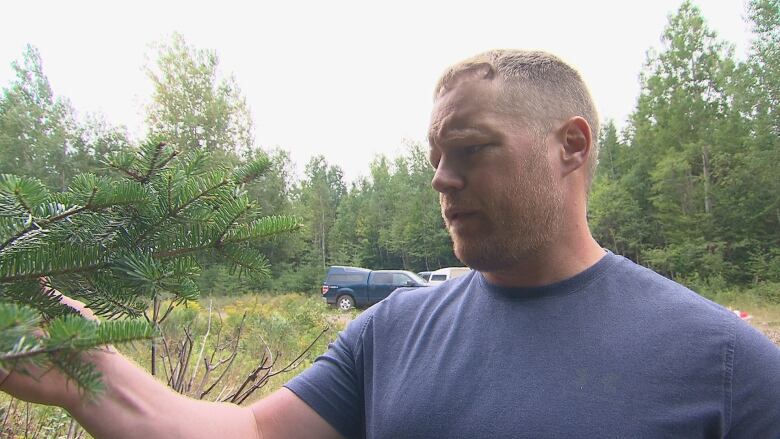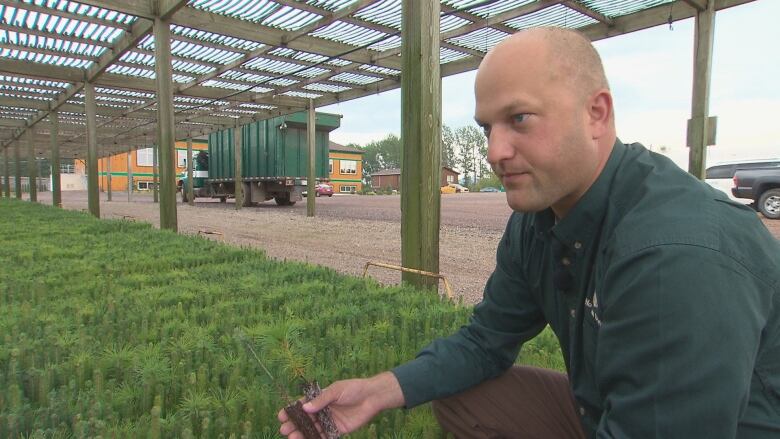'Imminent' spruce budworm outbreak worries forest industry
Insect been wreaking havoc near border in Quebec and several 'hot spots' in province have been sprayed

New Brunswick is on thebrink of another spruce budworm outbreak and theforestry industry the largest in the province is doing everything in its powerto prevent massive defoliation like that ofthe 1970s.
Over the border in Quebec, the insect has beenwreakinghavoc around the Matapedia regionand scientists warn it's been inching closer to New Brunswick.
Just this summermillions of moths descended on Campbellton, coatingparking lots, cars andeven people.
- 'Millions' of moths alight at Campbellton auto dealership
- Moth infestation in northern N.B. likely spruce budworm
"It is right at our doorstep," said Rob Johns, research scientist with theCanadian Forest Service.
"An outbreak potentially is imminent in New Brunswick."
More prevention, less spraying

"There's a general consensus that this is an issue that needs to be addressed immediately," Legere said.
And that's exactly what the industry has been doing.
But to control the insect's population, the province is banking on adifferent approach than theintensive aerial spraying of the past, according to theresearch scientist with theCanadian Forest Service.
"We're trying to do a very surgicaltargeted, very small areas, instead of treatinghalf the province, which happened during the previous outbreak," said Johns.
Scientists together with the industry have startedtreating several hot spots in New Brunswick in the face of a looming epidemic.
Thousands of jobs at stake

Legere said the forest sector is concerned about the economic impact of a budwormoutbreak.
"A severe outbreak as to what we see in Quebec currently could potentially result in the loss of probably 2,000 jobs. Not to mention economic activity could suffer in the range of $4 to $6 billion," said Legere.
Forestry giant J.D. Irving Ltd. has even taken things a step further.
Together with researchers at Carleton University in Ottawa, it developed a substance to treat young trees and make them naturally resistant to the insect.
"It's a lot less expensive and a lot less risky than treating them later on if we have another epidemic when these trees are older," said Jason Killam, forest engineer with J.D. Irving Ltd.
Lack of diversity
But environmentalists believethe budworm is a symptom of a larger problem.
"We've simplified our forest for one that is a breeding ground for spruce budworm," saidTracyGlynn, forest program director with theConservation Council of New Brunswick.
Forest companies tend to re-plant clear cuts with fir and spruce trees,species-at-risk for infestations.
"We need to move towardsupporting a more diverse, resilient forest. That's our best defence against pest outbreaks," said Glynn.
Time's running out though. With outbreaks running in 35-year cycles, it won't be long, before the province sees another one.
"We could be looking at just three or four years where we would see much more defoliation." said Johns.












_(720p).jpg)


 OFFICIAL HD MUSIC VIDEO.jpg)
.jpg)



























































































